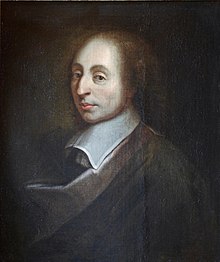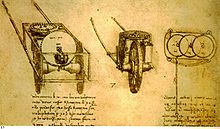Pascaline

The Pascaline was the first calculator, which worked based on wheels and gears, invented in 1642 by the French philosopher and mathematician Blaise Pascal (1623-1662). The first name he gave to his invention was “arithmetic machine.” He then called it the “Pascaline wheel,” and finally the “Pascaline wheel.” This invention is the remote ancestor of the current computer.
Pascal had been a precocious child, and was educated by his father. His first works were on natural and applied sciences. He contributed significantly to the study of fluids.
In 1642, at the age of 19, Pascal conceived the idea of the pascaline in order to facilitate the task of his father, who had just been appointed superintendent of Upper Normandy by Cardinal Richelieu, and who had to restore order of the tax revenues of this province.

The pascaline was slightly less bulky than a shoe box and was low and long. Inside, there were toothed wheels connected to each other, forming a transmission chain, so that, when a wheel rotated completely on its axis, it advanced a tooth to the next position (a tooth or a number, since each tooth of the gear corresponds to a number from 0 to 9).
The wheels represented the "decimal numbering system." Each wheel consisted of ten steps, for which it was conveniently marked with numbers from 9 to 0. The total number of wheels was eight (six wheels to represent whole numbers and two more wheels, on the far right, for decimals). With this provision "numbers between 0'01 and 999,999'99 could be obtained."
Using a crank, the gear wheels were rotated. To add or subtract, all you had to do was operate the crank in the appropriate direction, with which the wheels moved in the necessary steps. When a wheel was at 9 and 1 was added, it advanced to the position marked by a zero. At this point, a hook advanced the next wheel one step. In this way the addition operation was carried out.
Operation
Additions and subtractions cannot be performed directly. Subtraction uses the “9's complement” principle. They are done as easily as additions and are done in the add-ons window. Nothing prevents multiplication by successive additions or division by successive subtractions. On some machines, intermediate results could be preserved. The gear wheels were rotated using a crank. To add or subtract, all you had to do was operate the crank in the appropriate direction, with which the wheels moved in the necessary steps.
Complement to 9
The 9's complement of a decimal figure d is defined as 9 - d. For example, the complement of 9 of 4 is 5 (9 – 4) and of 9 is 0 (9 – 9). Similarly, the 11's complement of 3 is 8. In an n-digit decimal machine, the 9's complement of a number A is defined as:
For example, for two figures n=2 and A=25, the 9's complement of A is:
Thus, the 9's complement of (A - B) is worth:
The 9's complement of the difference of two numbers is the sum of the 9's complement of the first number plus the second number.
As the complement of the complement of a number X is the same number:
to obtain the value of (A - B) we find the complement of that result just obtained, that is,
The same principle can be applied to numbers composed of different bases (base 6, 10, 12, 20).
This behavior can be extended as follows:
Applied to a decimal pascaline:
| The machine is 0. The add-on to 9 of the first number is registered (in some machines when the number is automatically entered the add-on). The direct number comes out in the window of the add-ons (the add-on is the same number, ). | |
| Then the second number is introduced (it is a sum). | |
| The result, , it is inscribed in the plugins window, since . |
The same principle is valid for non-decimal pascalins (if b is the base, the complement to b of d a n figures ). The complement to 9 is called in some books Pascalino complement.
Sum
The horizontal bar must be placed near the edge of the machine (in the maximum position). After setting the machine to 0, you just have to enter the numbers one after the other.
The following is an example of an amount:
| Summa | The machine is 0, the number 12.345 is registered. |
| ||||||||||
| The second number is recorded: 56,789. The result is marked directly. |
|
Subtraction
Throughout the subtraction the accumulator will have the values at the beginning and after the sum of B. In the window of the supplements we will see It's A, and then What is it? . The subtraction is similar to the sum. The difference is the choice of the result window (direct window or complementary window) and the method of inscription of the first figure. The horizontal bar should be located near the center of the machine, in position of resta and then will display the complementary number inscribed. Then use this number and make a sum.
Below is the example of a subtraction:
| Change of display space | Move the bar to the center of the machine for the complementary. |
| ||||||||||
| Resta | Inscribe the supplement of 54.321 (45.678). |
| ||||||||||
| Add 12,345. The result 41.976 can be read immediately in the supplementary window. |
|
Precursors of the calculator
All gear machines prior to Pascaline are part of the precursors of the calculator. This is the summarized list of the most relevant inventions:
- The Anticitera mechanism, from before the year 87 a. C. (former mechanical calculator to determine astronomical positions).
- The mechanical watches of the centuryXIII.
- Astrolabs (instruments that allow to represent the movement of stars in the sky).
These machines allowed the societies that produced them to become familiar with the movement of the gears, with the meticulous work of the metals that composed them and with their assembly.
Some measuring instruments and certain controllers were also precursors to the calculator:

- The odometer is an instrument that measures the distance traveled by a vehicle, and was first described by the Roman Vitruvio around the year 25 a. C. Vitruvio presents an odometer installed in a car. It consists of a series of gears connected by a retention progression. The first wheel was driven by one of the chariot wheels and the last one dropped a small ball in a bag to each roman mile.

- A Chinese text of the centuryIII describes a float with two figurines of wood on top of it. One mechanism made one of the figurines give a drum stroke every time it cut a ri (long unit used in Japan, equivalent to 3.9 km), and made the other figurite sound a bell every 10 ris.
- At the end of the centuryX, the French monk Gerberto de Aurillac, brought from Spain the plans of a calculator, invented by the Arabs, whose body of departure had the form of a flashing head that answered by itself or by no to the questions that were asked (binarian arithmetic), but the opinions differ in their existence.
- In the centuryXIII, the monks Alberto Magno and Roger Bacon built dolls with gears. These instruments were not successful. Alberto Magno complained of having lost 40 years of work when Thomas Aquinas, terrified by his machine, destroyed it.
- In 1525, the French architect Jean Fernel created the podometer, the first machine capable of counting the number of steps of a man or a horse. This machine had the shape of a watch and had four screens showing the units, tens, hundreds and thousands.
- In 1623 and 1624, Wilhelm Schickard, an evangelical and university pastor of Suabia, sent the design of a watch that could calculate in two letters addressed to Johannes Kepler. The first machine—which was to be built by a professional—was destroyed, half finished, in a fire in 1624 and Schickard left the project.
In 1709 the Italian Giovanni Poleni built the first clock capable of calculating. It was not a machine with a direct entry method (the figures had to be recorded first, and then the machine was put into operation).
In 1730, the Academy of Sciences (in Paris) declared three machines invented by Hillerin Boistissandeau, which had the mechanism of a clock to calculate. The first machine uses a one-tooth retention system (like the Schickard watch). This was not working correctly. The other two machines used springs to set the detent. This was a suitable solution for such a system.
Contenido relacionado
Israel Space Agency
Conglomerate
XHTML


















